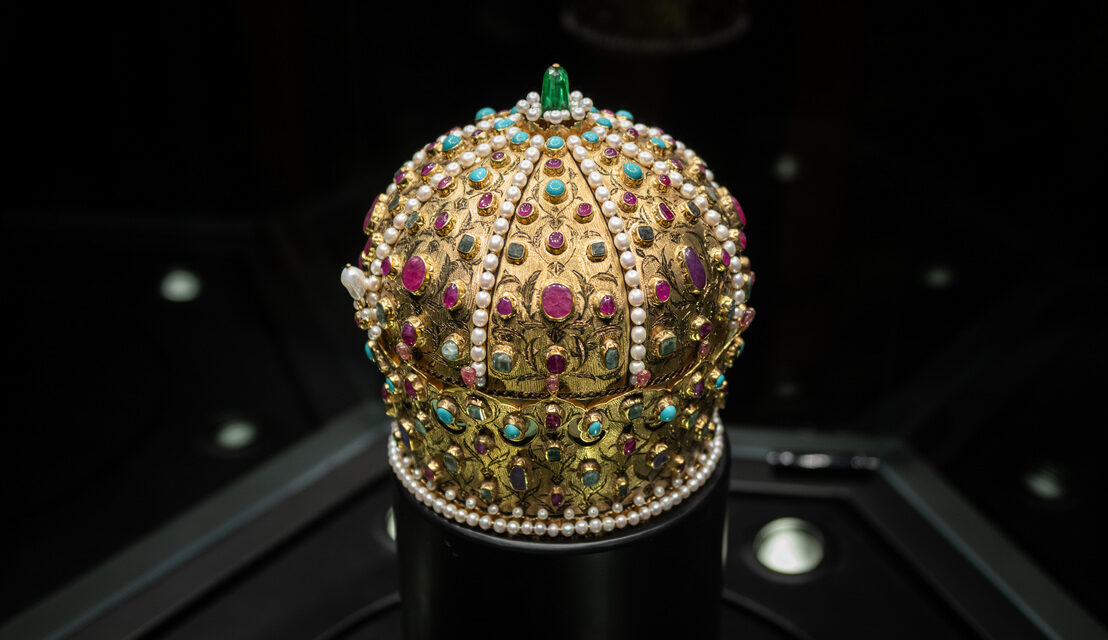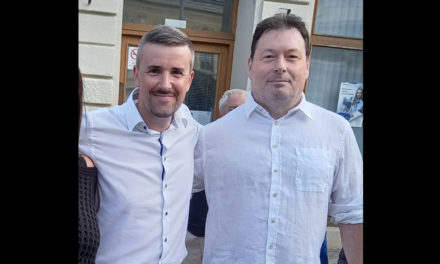In European tradition, the crown is the main object of royal dignity. One of its types is the coronation crown, which is rare and special even among crowns because it is associated with the moment when someone becomes a ruler. Two of the modern Hungarian coronation crowns have survived. Everyone knows about one of them, it is the Holy Crown, which has been kept in the Parliament since January 1, 2000. However, we have another lesser-known crown, the Bocskai crown, which can be found in the Bocskai Museum in Hajdúszoboszló. True, it is "only" a noble copy, because the original can be seen in the Schatzkammer of the Hofburg in Vienna, the imperial treasury. Index reporters followed the adventurous history of the Bocskai crown in Hajdúszoboszló.
Coronation in Rákos field
On November 11, 1605, Grand Vizier Lalla Mehmed, the commander-in-chief of the Turkish armies fighting in Hungary, received István Bocskai, the prince of Transylvania and Hungary, in his tent at Rákos field near Pest. The Hungarian lords gathered for the coronation ceremony:
Sultan Ahmed I sent Bocskai an ornate crown richly decorated with precious stones at the prince's request.
The previous historical thesis that Bocskai had a divisive attitude towards the ceremony, did not accept the royal title, respected that the crown of St. István II. It is on Emperor Rudolf's head. In fact, a royal coronation took place, which, although not according to the current law, was done with the consent of the parties present and a significant part of Hungarian society at the time.
With this - and his military successes based on the hajduks - Bocskai forced the emperor to return the freedoms he had taken. In this way, he actually fulfilled his goals, and since he was a real politician, he also knew that without European allies, the Turks could not be expelled from Hungary. Therefore, half a year after the coronation, he was able to renounce his royal power: it was included in the text of the Vienna Peace of 1606 that Bocskai acknowledged that this crown "was not accepted to diminish the king and Hungary, and its old crown (the Holy Crown)" . that is, it is not regarded as the royal badge of honor of the Kingdom of Hungary.
This is where Bocskai's true greatness can be grasped: freedoms were more important to him than power, as his motto indicates: "We value the freedom of our faith, our conscience and our old laws more than any gold (golden crown)."
The coronation is therefore a historical fact, as Dr. László Bihari-Horváth, the director of the Bocskai Museum in Hajdúszoboszló (where else than in the museum's building at Bocskai út 12...) also emphasizes this while we are standing in the new building of the Imperial Treasury, within arm's reach of the "noble and authentic" copy of István Bocskai's crown. Because the original has been on display since 1610 in Vienna's Schatzkammer, the Imperial Treasury of the Kunsthistorisches Museum.
More than twenty goldsmiths worked on the copy for two years. Led by master goldsmith and gemmologist József Takács
- says the museum director, then continues: "Already the starting point is extraordinary, since we were the only ones given the opportunity to make the copy from the Kunsthistorisches Museum in Vienna. They gave us permission to assess the original crown outside with Zoltán May, a material testing specialist at the Natural Research Institute of the Hungarian Academy of Sciences, who assessed the quality of the material using fluorescence imaging. Previously, little was known about the Bocskai crown as an artefact, so we were able to find out if there was a difference between the gold elements of the crown in terms of the fineness of the gold. And we were not sure about the originality of the stones decorating the crown."
But now we know: the original crown was made of three types of gold, the diadem and the so-called dome together weigh 1757 grams, the number of precious stones is 486, of which 89 rubies, 65 emeralds, 15 spinels, 8 amethysts, 32 turquoises and 282 true pearls.
Emeralds, rubies, pearls
The replica is made of the same material as the original, the precious stones and true pearls are also real, so it follows that the replica is also priceless. The only exception is the three-centimeter emerald top ornament, which would have cost approximately fifteen million forints on the gem market, which was no longer in the budget.
Twenty-carat rubies also decorate the crown, which gives a good idea of how much the artefact can be worth. It has an appraised value and an insurance value, but this information is not public
- indicates the director and adds: "Thanks to the tender support of the European Union, a consortium project was realized in the county of Hajdú-Bihar, which enabled the development of tourist attractions in several settlements. Along a thematic cultural route, which has been named the Oxenweg - Hungarian Gray Road, and includes memories related to the Hajdú past, cattle herding and shepherding. The crown project fit into this, because Bocskai settled the Hajdús in Szoboszlo. A total of HUF 160 million was used to create the replica of the Bocskai crown, which also includes the construction of a new museum building wing. Out of this 160 million, about one hundred million is the European Union subsidy, to which the municipality added sixty million as its own share."
By the way, Bocskai received not only a crown, but also a scepter from Ahmed I, an authentic copy of which can be viewed in the museum. Bocskai kept the original in his own treasury as long as he was alive, and then in the 170 years that followed, there is no mention of the ornament. The XVIII. At the end of the 19th century, it appeared in the private collection of Transylvanian governor Samuel von Brukenthal in Great Sibiu. The art-collecting Saxon noble left his rich collection to the Lutheran Church. The scepter was evacuated to Hungary during the First World War, and was only brought back to Sibiu in 1919. Then, after the Second World War, the communists nationalized the museum, and most of the artefacts, together with the scepter, went to the Romanian National History Museum in Bucharest, where they are still kept.
How did it get into the Schatzkammer?
The crown did not enter the Transylvanian treasury. Bocskai died in Kassa on December 29, 1606, more than a year after his coronation, both he and his followers believed that he had been poisoned. Chancellor Mihály Kátay was suspected of the murder, and before it was revealed that the suspicion was unfounded, Bocskai's enraged men beheaded the chancellor.
Bálint Homonnai Drugeth, the main man selected by Bocskai, kept the crown with him in Sárospatak, thinking that he would become the prince, but he did not. Meanwhile, under Habsburg pressure, a law was passed in the Parliament of the Kingdom of Hungary in 1609 stating that the crown must be handed over to the king, who was II. It was Matthias. Referring to this, the Habsburg paladin György Thurzó took the crown from István, the minor son of Bálin Drugeth Homonnai, who had also wrongfully usurped it and died in the meantime, and took it to Vienna and then handed it over to the king. This is how it ended up in the Schatzkammer more than 400 years ago, where it is still kept today.
From there, it was brought back to Hungary only once, in 1884, for the Hungarian historical goldsmith's exhibition of the Museum of Applied Arts, which was still operating in the building of the National Museum. After this was completed, the crown was returned to the Schatzkammer.
The teeth of the Romanians also hurt the crown
It is an exciting historical fact that after the dissolution of the Austro-Hungarian Monarchy, negotiations began between Austria and the successor states regarding the possible return of the treasures kept in the Hofburg. However, in 1921, not only Hungary, but also the Romanian state (!) claimed the Bocskai crown as the new lord of Transylvania. Allegedly, they wanted to crown the Romanian king with this.
These attempts, both Hungarian and Romanian, failed, which is why the crown can still be seen today in Vienna.
The full article HERE .
Cover image: Copy of the Bocskai crown in the Bocskai Museum in Hajdúszoboszló - Photo: Bence Tövissi / Index












